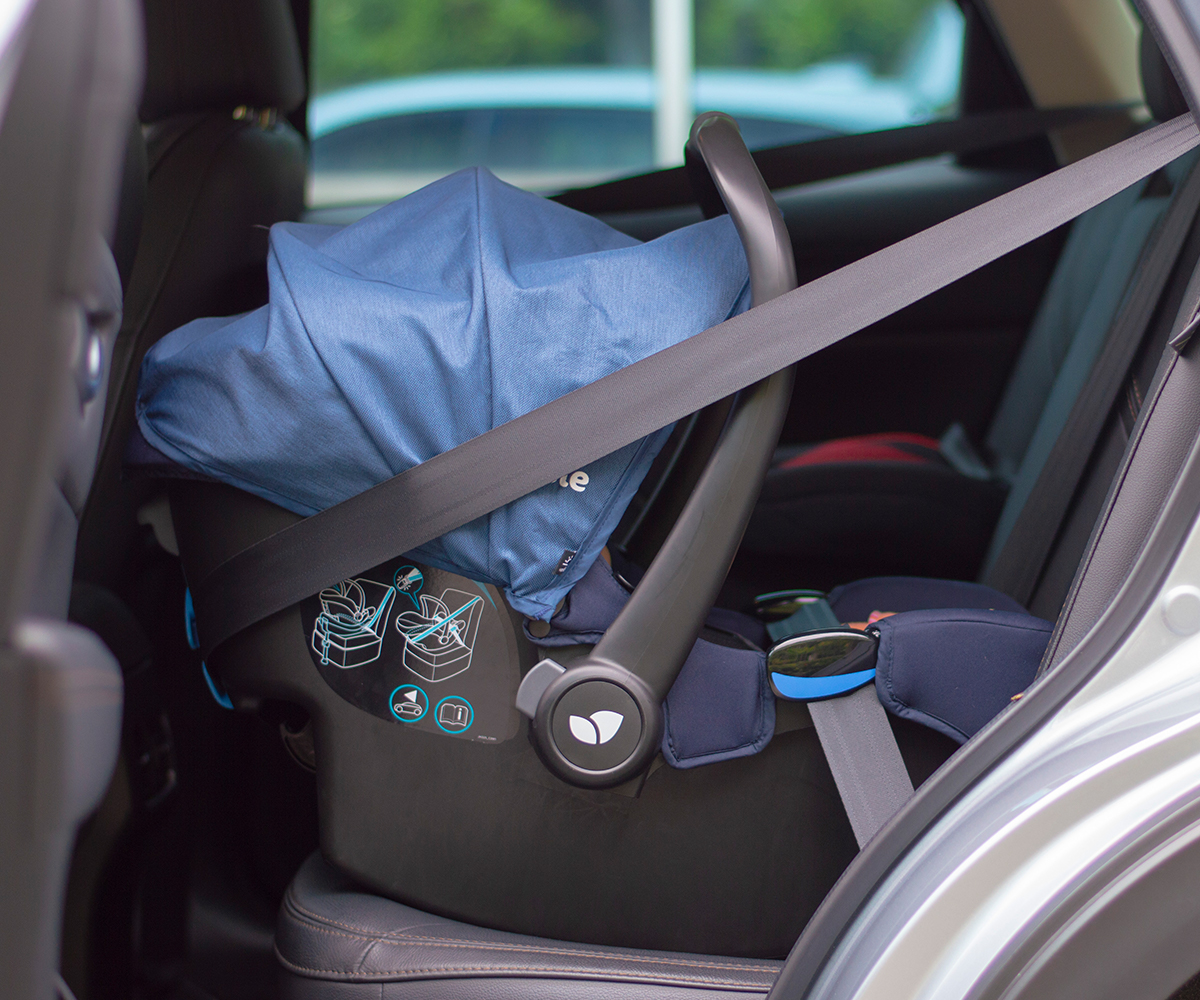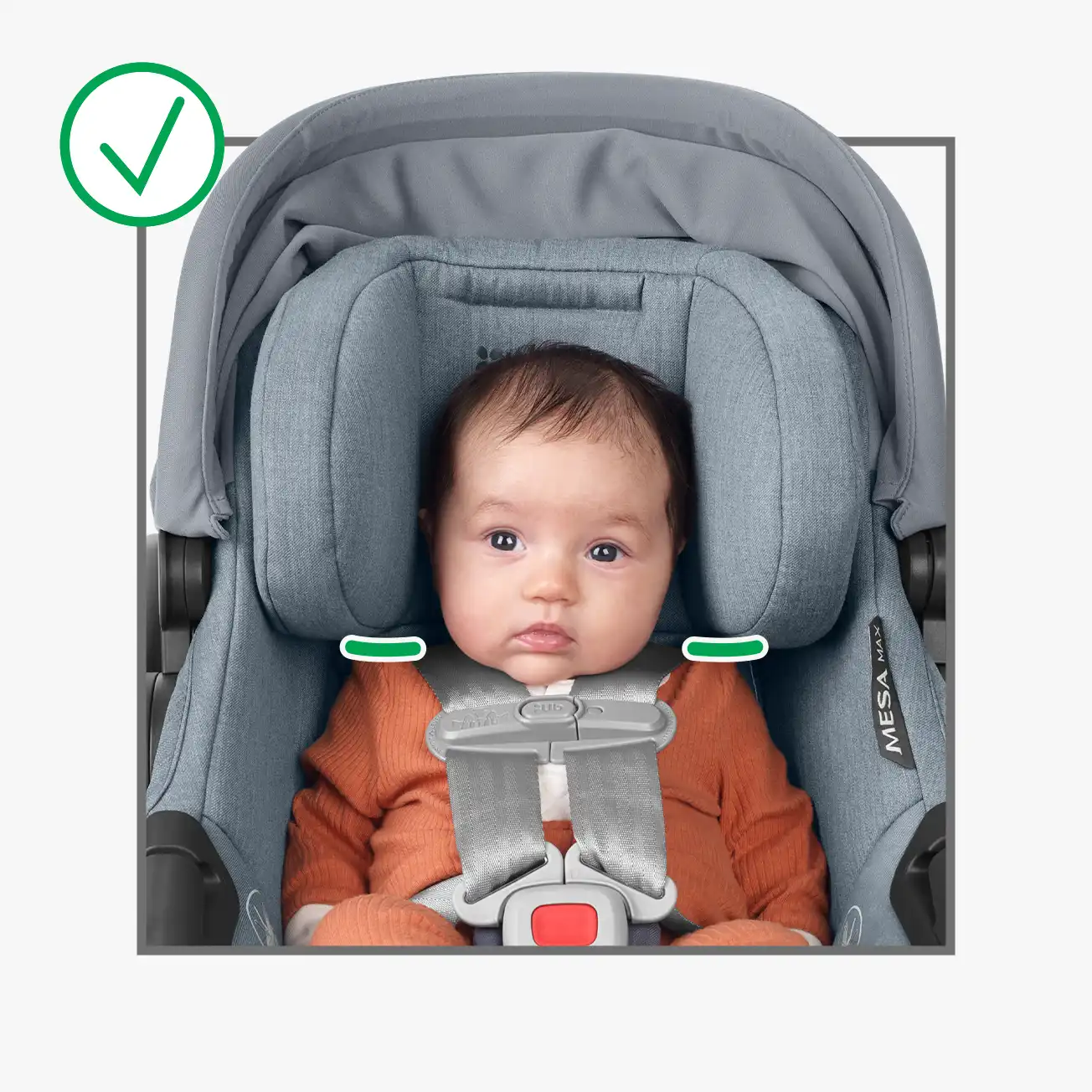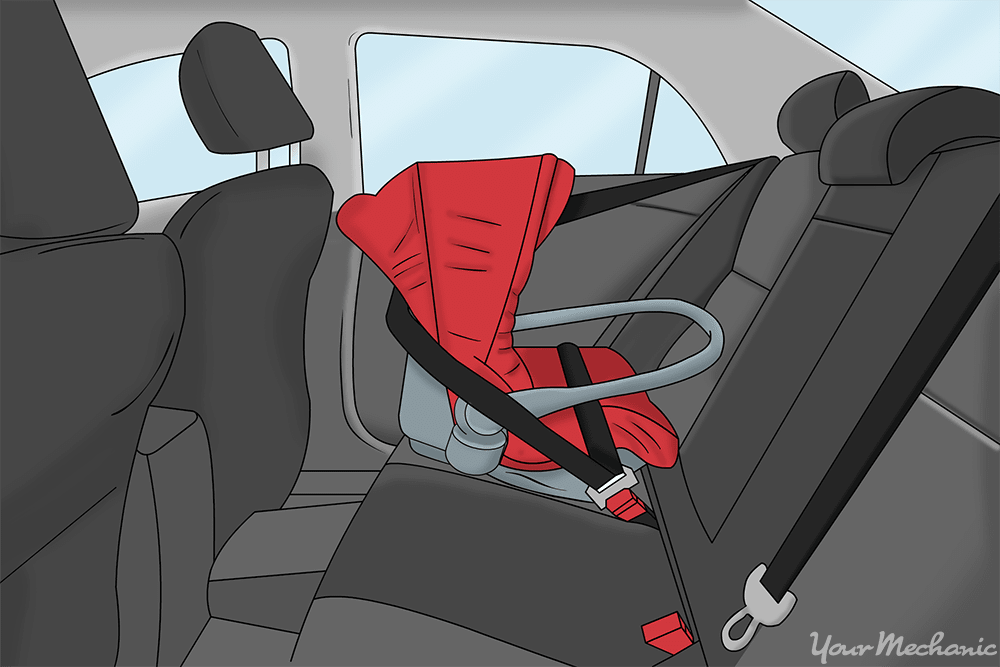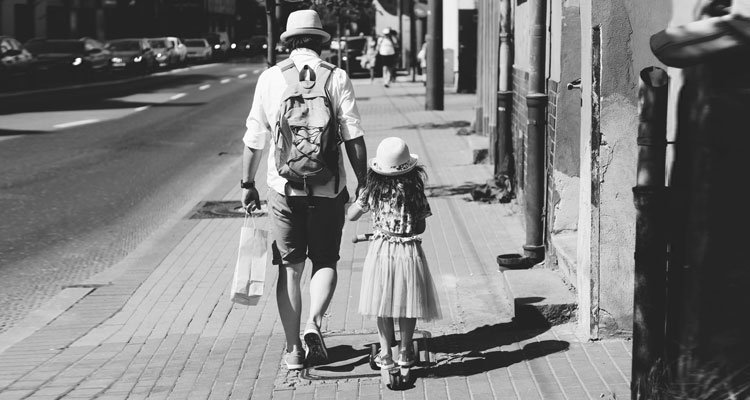Fitting a baby car seat correctly ensures your child’s safety. It can be tricky, but it’s essential for peace of mind.
Many parents find themselves puzzled by straps, angles, and latches. But don’t worry. With some guidance, you can install it with confidence. This guide will walk you through the process. You’ll learn the steps to ensure a secure fit. Car seats can be complex, with different models and features.
Understanding your specific seat and vehicle is key. Proper installation can prevent injuries in an accident. Safety experts stress the importance of a snug fit. Each step in this guide is designed to help you achieve that. Let’s dive in and make your child’s car seat journey safe and secure.
Choosing The Right Car Seat
Choosing the right car seat for your baby is crucial. It ensures safety during every ride. The right seat offers comfort and protection. But, with so many options, picking the best can be overwhelming. This guide will help you make an informed choice.
Types Of Car Seats
There are three main types of car seats. Infant car seats are designed for newborns. They are rear-facing and portable. Convertible seats grow with your child. They can switch from rear-facing to forward-facing. Booster seats elevate older children for seat belt fit.
Age And Weight Considerations
Every car seat has specific age and weight limits. Infant seats are ideal for babies up to 12 months. They support weights up to 35 pounds. Convertible seats accommodate children from birth to preschool. They usually handle up to 65 pounds. Booster seats are for children over 4 years. They fit kids weighing up to 100 pounds.
Reading The Manual
Understanding how to fit a baby car seat can be challenging. But reading the manual simplifies it. Manuals offer step-by-step guidance. They ensure your baby’s safety. Investing time in this step is crucial. It helps avoid common mistakes. Let’s explore how to make the most of your manuals.
Car Seat Instructions
Every car seat comes with specific instructions. These instructions are tailored to the seat’s design. They provide detailed installation steps. Read them thoroughly before starting. This helps you understand the seat’s unique features. Pay attention to weight and height limits. These factors ensure your baby’s safety.
Vehicle Manual Insights
Your vehicle manual is equally important. It highlights the safest seat positions. It also explains the use of LATCH systems. Some vehicles have unique anchorage points. The manual will guide you on these. Understanding your car’s layout aids in correct installation. Always cross-reference both manuals. This ensures a snug and secure fit.
Positioning The Car Seat
Ensuring a secure fit for a baby car seat starts with choosing the right spot in the vehicle. Adjust the seat angle so the baby sits comfortably and safely. Fasten the car seat using the seatbelt or latch system, checking for a snug fit.
Positioning the car seat correctly is crucial for your baby’s safety. It ensures the child is protected in case of a sudden stop or accident. Proper positioning reduces risks and enhances comfort. Parents must know how to position a baby car seat effectively. This guide will help you understand key aspects of car seat positioning.Rear-facing Vs. Forward-facing
Rear-facing seats are recommended for infants and toddlers. They provide better protection for the head, neck, and spine. Experts suggest keeping children rear-facing as long as possible. Forward-facing seats are for older children who exceed rear-facing limits. They offer safety features for growing kids. Always check the manufacturer’s age and weight guidelines.Optimal Seat Placement In Car
The back seat is generally the safest spot for a car seat. It keeps the child away from airbags in the front. If possible, place the seat in the middle of the back row. This position offers the most protection in side-impact crashes. Ensure the seat is tightly secured and stable. Check that the seatbelt or latch system is correctly fastened. Safety checks should be done each time you fit the seat.
Credit: designireland.ie
Securing The Car Seat
Securing a baby car seat is crucial for your child’s safety. Ensuring a snug fit provides peace of mind during every drive. A correctly installed car seat minimizes risks in case of sudden stops or accidents. This section will guide you through two popular methods: the LATCH system and proper seat belt installation. Each method offers reliable security for your precious little one.
Using The Latch System
The LATCH system stands for Lower Anchors and Tethers for Children. It simplifies car seat installation without needing seat belts. First, locate the lower anchors in your car’s back seat. These are usually marked with small icons. Attach the car seat’s connectors to these anchors. Ensure they click firmly into place. Next, adjust the tether strap at the top of the seat. Fasten it to the corresponding anchor point. Tighten the tether until the seat is secure. Check for any wobble by gently shaking the seat. It should not move more than one inch.
Proper Seat Belt Installation
If your car lacks the LATCH system, use the seat belt method. Start by placing the car seat on the vehicle’s seat. Thread the seat belt through the designated path on the car seat. Buckle the belt securely. Lock the seat belt by pulling it all the way out, then letting it retract. This ensures the seat belt stays tight. Push down on the car seat with your weight. Tighten the belt further, removing any slack. Again, check for movement. The seat should feel firm with minimal shifting.
Adjusting Harness And Straps
Ensuring the proper fit of a baby car seat involves adjusting harness and straps securely. Straps should sit snugly on the baby’s shoulders without pinching. Regular checks guarantee optimal safety and comfort during every ride.
Adjusting the harness and straps of your baby’s car seat is crucial for their safety during every journey. Many parents find this step a bit tricky, but with a little practice, it becomes second nature. Ensuring that the harness is properly adjusted provides not only security but also comfort for your little one. Let’s dive into the details to make sure your baby is both safe and comfortable.Correct Harness Height
The harness height is critical. It should be at or below your baby’s shoulders in a rear-facing seat. For a forward-facing seat, adjust the harness to be at or slightly above their shoulders.I remember my first time adjusting the harness; I was unsure if I got it right. Checking the manual and using the markers on the seat made it clear. Always double-check the height, especially after your child has a growth spurt.Ensuring A Snug Fit
A snug fit isn’t just about safety; it’s about peace of mind. The harness should lie flat with no twists and be tight enough that you can’t pinch any excess webbing between your fingers.Think of it like a warm hug—secure but not suffocating. I once thought my harness was tight enough, until I tried the pinch test and realized it needed more adjusting. How confident are you in the snugness of your baby’s harness?Adjusting these elements might seem like a small detail, but it makes a world of difference in your child’s safety. Next time you’re buckling up, take a moment to consider these points. Your diligence today protects your child tomorrow.
Credit: uppababy.com
Double-checking Installation
Ensure the baby car seat is securely installed by double-checking all safety features. Verify harness tightness and seat stability. Confirm the seat is correctly positioned according to the manufacturer’s instructions. Proper installation is crucial for your child’s safety.
Installing a baby car seat is a critical task that every parent needs to master for their child’s safety. But the job doesn’t end once you buckle it in. Double-checking the installation is a crucial step that ensures your little one is secure during every drive. You might think you’ve done it right, but a second look can reveal hidden errors. This section will guide you through common mistakes and verification steps to help you become a pro at car seat installation.Common Installation Mistakes
Even the most cautious parents make errors. One common mistake is not tightening the seat enough. A loose car seat can slide around, compromising safety.Another frequent error is misrouting the seat belt or latch system. Make sure you follow the car seat’s manual, as each seat has specific instructions.It’s easy to overlook the angle of the seat. Incorrect angles can affect your baby’s comfort and safety, especially for newborns who need a reclined position.Verification Steps
To ensure the seat is secure, perform a simple wiggle test. Grab the car seat and try to move it side to side. It should not move more than an inch.Check the seat belt routing. It should be locked and free from twists. A twisted belt can reduce the effectiveness of the restraint system.Confirm the angle by using the indicators often found on the side of the car seat. These are designed to show if the seat is reclined at a safe angle for your child.Lastly, engage with your child’s pediatrician or local fire department—they often offer car seat installation checks.Are you confident in your installation skills, or could double-checking save you from unexpected risks?Maintaining The Car Seat
Maintaining a baby car seat is crucial for safety and durability. Regular upkeep ensures it remains effective in protecting your child. A well-maintained seat not only lasts longer but also provides peace of mind. Dive into essential maintenance tips to keep your car seat in top condition.
Regular Safety Checks
Inspect the car seat for any visible damage. Check straps and buckles for wear. Ensure all parts are securely fastened. Regularly review the instruction manual. Verify the seat is installed correctly. Tighten any loose components immediately.
Cleaning And Care Tips
Clean the seat using mild soap and water. Avoid harsh chemicals that can damage fabrics. Remove and wash the covers as per guidelines. Vacuum crumbs and debris regularly. Dry all parts thoroughly before use. Store the seat in a dry, cool place when not in use.
Additional Safety Tips
Ensuring your baby’s safety in the car is crucial. Proper car seat installation is just the start. Following additional safety tips can make all the difference. These tips will help keep your child secure during every trip.
Weather Considerations
Extreme weather can affect car seat safety. In hot weather, check the seat’s temperature. Car seats can become very hot. Use a sunshade or towel to keep it cool. In cold weather, bulky coats can be dangerous. They prevent a snug fit. Instead, use a blanket over the harness.
Travel Safety Precautions
Always double-check the car seat installation. Ensure it doesn’t move more than an inch. Secure all toys and objects. Loose items can become projectiles. Avoid placing the car seat in the front. The back seat is the safest spot. Never leave your child alone in the car. Even for a minute. This keeps them safe from overheating and other dangers.

Credit: www.yourmechanic.com
Frequently Asked Questions
How To Properly Install A Baby Car Seat?
Place the car seat in the back seat facing the rear. Secure tightly using seat belts or LATCH system. Adjust harness straps at shoulder height. Ensure the seat doesn’t move more than an inch. Check installation with vehicle manual and car seat guide for safety.
How Should An Infant Car Seat Fit?
Ensure the infant car seat fits snugly in the vehicle. The harness should be tight and positioned at or below the baby’s shoulders. The seat shouldn’t move more than an inch side-to-side. The recline angle should support the baby’s head without restricting breathing.
What Is The 1 Inch Rule For Car Seats?
The 1 inch rule for car seats means the seat shouldn’t move more than 1 inch in any direction. This ensures the car seat is securely installed, enhancing child safety during travel. Always check for snug installation to protect your child effectively.
How To Set Your Car Seat Correctly?
Adjust your car seat to ensure comfort and safety. Position the seat back upright. Align the steering wheel with your chest. Set the seat height for a clear road view. Ensure your feet reach pedals easily. Always buckle up securely.
How Do I Install A Baby Car Seat Safely?
Secure the seat with the car’s seatbelt or anchors. Ensure it’s tight and doesn’t move.
Conclusion
Fitting a baby car seat ensures your child’s safety during travels. Always double-check the seat’s stability. Follow the manufacturer’s instructions closely. Make sure the seat belt is fastened securely. Adjust the harness so it’s snug, but not too tight. Practice installing the seat a few times to gain confidence.
Remember, a correctly fitted car seat can save lives. Never rush the process; take your time. Safe travels mean a happy journey for you and your baby. Prioritize safety, and enjoy peace of mind on the road. Your child’s safety is worth every effort.


